Let’s get this right out of the gate: The photos I took here are of hand-built prototypes. As such, they look a bit sketch – like, Elmer’s glue and Home Depot sketch. Also, these units are about 30% larger than the final production units. And, there’s a bunch of other caveats we’ll get to later. But, this is also the reality of hardware – be it for startups or giant companies. All devices look rough initially.
With that said, let’s talk about the device itself. As you’ve obviously seen by now, it’s a cycling GPS computer, designed to compete in the same price range and screen size as Garmin’s Edge 1030 and Sigma’s ROX 12 (as well as Hammerhead’s Karoo). More than that, the designers were aiming for a more modern and refined look to the unit, leveraging design firm Valeur Designers (with ties to Bang & Olufsen) for the exterior design. Though ultimately, I suspect most of us care more about how well it works than looks. Fear not, we’ll get to that.
In fact, to that point, Absolute’s biggest technical feature/focus area is their claims around GPS accuracy, saying that it’ll be “the most accurate cycling computer in the world”, which they detail through what they call ‘Absolute Positioning Technology’, and by sampling 20 times more frequently than traditional bike computers. Again, another topic we’ll cover in a minute.
Of course, this is a crowd funded project, which went live today. And my general policy for covering crowd funded projects with any sort of standalone post is hands-on time. I want to touch and feel the product, turn it on, and determine where they really are progress-wise, allowing me to in turn judge whether or not they have a shot in hell of hitting their claimed timelines. So yesterday, that happened. They came to the DCR Studio and we even went for a short ride. Which yet again, you’ll find details on down below.
Oh, and finally, please note this is not a review. God no it’s not a review. The product is 9 months away from shipping (in a best case scenario), and I’ve had only a short ride on something that’s nothing like what you’ll eventually get. Instead, this is just my usual first look ‘explainer’ about what the company’s plans are. Again, not a review. Got it? Good.
The Basics & Specs:
Now, let’s have a quick look at the hardware specs. For the most part, these are in the general ballpark of other GPS units in this price range. But keep in mind, hardware doesn’t really matter as much comparatively these days. It’s mostly about software.
– 20 hour battery life
– GPS claimed accuracy within 2 meters
– GPS/GNSS types support: GPS, GLONASS, Galileo, Beidou
– 3” Full color screen (non-touch)
– Audio alerts/tones
– Resolution of 800x400px
– Ambient light sensor for changing display brightness based on light outside
– Three buttons on unit
– Waterproofed (unclear on exact specification)
– Target weight approx. 100g
– WiFi for uploading rides, downloading routes, maps, etc…
– ANT+ & Bluetooth Smart sensor connectivity
– Wireless charging (no wired port)
Now, it’s this last one that sticks out a bit. And honestly, I’d wager it’ll never happen in the final device. Rather than going with a USB-C or Micro-USB connector like most companies, they’re going straight wireless. While that’s bold, I honestly think it’s not exactly smart bold. It adds a bunch to the bill of materials, adds complexities for end users to charge while on the road, and takes a hell of a lot longer to charge (at least 5-6 hours they suspect). Not to mention the most obvious: When something goes wrong, there’s zero option for an end user to use a cable with support to fix something. I could come up with more reasons, but for now I’ll assume that won’t happen by next spring (or, there will be a charging port there too).
Just for clarity purposes, here’s what the final unit is set to look like down the road. All the photos you see here otherwise are from me, taken with a prototype unit:
As noted, the rest of the specs are pretty normal. Battery is about the same as the Wahoo ROAM and Garmin mapping units (for regular battery profiles), and the resolution is higher than Garmin and Wahoo’s units, and even twice that of the Sigma’s ROX 12, and about 25% more than the Hammerhead’s Karoo. The only other catch is the three button menu system. For comparison, Wahoo’s non-touchscreen ROAM has 6 buttons, and Garmin’s non-touchscreen Edge 530 has 7 buttons. When you move to touchscreen systems you generally remove buttons (with 3 being the norm).
Part of the reason for the shift away from buttons is Absolute’s plan to have the unit heavily phone-driven. The vast majority of the menus (as well as configuration) will be on your phone. So when it comes to riding, it’ll be more or less just the start button. If you want to load workouts or courses, you’ll do that from your phone.
With their release not planned till next March, the app wasn’t done yet (completely normal). However, they did have extensive mockups/wireframes of the app done with all of the user flow and UI bits completed that they walked me through. I’ll give them props in that their app looked nice, and properly flowed. That is to say, it was done be legit cyclists.
And that’s a super important point that I don’t think can be overstated enough: The software development team (8 dedicated software engineers from a 3rd party software development company) is in the Netherlands and all cyclists, some of them front of the pack racing cyclists. That’s a huge shift from what we saw with Hammerhead when they launched their Karoo, where their software development was outsourced to India.
To be clear: There’s nothing wrong with outsourcing to India. Many companies do it successfully. But I’ve rarely seen it work for startups that don’t have the organizational structure to oversee it locally. And I’ve never seen it work well for a sports technology company where understanding the nuances of sports is super important, as is living and breathing the product.
Like them or not – Garmin, Suunto, Polar, and Wahoo all have in-house developers that live and breath their products on the weekends. So it’s great to see that Absolute’s development team speaks the same language and are all doing the sport that this product is made for.
Speaking of keeping things local, all hardware production will be done in the Netherlands as well. Now less you think that just because I live in the Netherlands I care too much that a given product is made here – I don’t. Really, I don’t. What I care about is that it’s made local to wherever the company is based. Down the road when startups get big enough to know how little they actually know about product development, then they can outsource manufacturing elsewhere. But I strongly advise all sports tech startups to find manufacturing facilities in the same country as them (ideally within a short drive) speaking the same language as them. This allows them to ensure details and nuances are exactly as they see them – not translated twice – and then also allows them to quickly be on-site to fix things. Sure, it costs a little bit more upfront, but every sports tech startup I’ve talked to has noted how much it saved them in the long run (or didn’t, when they went overseas).
But we’re getting distracted. Where was I again?
Oh, right, software apps. The unit at launch will sync with Strava and TrainingPeaks. Both for routes and structured workouts. For routes it’ll pull from Strava Routes, as well as .GPX/.TCX files. They’re also hoping to have some form of route creator built into the app at launch (hey, Wahoo still doesn’t have multi-point route creation in their app, and Garmin only added it two months ago). I don’t think that’s mission critical, but it’s a nice to have.
From a mapping standpoint the company is using Mapbox (same as Hammerhead) and will allow you to download maps for your region. These maps will show your current position and past track. Additionally, they’ll give you turn by turn guidance with street names.
At present they don’t plan to recalculate on the fly if you get off-course, instead, they’ll take the approach of pointing you back to the course for you to get on by yourself.
For structured workouts, they’ll allow you to execute a structured workout from the device itself by pulling the workouts from TrainingPeaks. They’ve got some pretty cool ideas on how to show each segment of the workout as you go through it. Nothing earth shattering, but it does look super clean and polished (again, in theory, it’s not real code yet). Also note, below is a computer generated image from them, which shows the smaller size unit and the polished final look.
Data fields are customizable as you’d expect, whereby the customization is done from your iOS or Android smartphone app. You can pick and choose data field layouts, as well as some pre-canned ones. Again, looks pretty clean at this point. Also of note is that it does permit you to see course directions (i.e., turn by turn details) while also executing a structured workout.
Also of note is that they’ll allow you to create multiple custom profiles for data configuration. Such as race, mountain bike, etc… And last but not least, the unit will support smartphone notifications from both iOS and Android.
Phew, with that overview, let’s head for a ride.
Brief Test Ride:
Now like I prefaced the first line of this post, there’s a slew of caveats to the first test ride. The most notable is that there was virtually no configuration options enabled on this unit, nor any app to control it. Basically, we turned it on, and it started recording immediately. I could only toggle the different data pages (3 pages in total) using two of the three buttons. Though, it was paired to a power meter (4iiii Precision) and heart rate strap (Wahoo TICKR) via Bluetooth Smart.
And perhaps equally notable is that the GPS antenna was outside the unit. While there was actually a GPS chipset and antenna inside the unit, they found they had interference from some other temporary non-final components that was causing them issues. So for now, it was tethered via USB cable. Which is sorta like cheating a test to some degree.
But this ultimately isn’t a test. It’s not a review (remember?). It’s me trying to figure out where they really sit. Speaking of sitting, here I am, sitting on my bike, pointing my camera at my handlebars. Here’s what it looks like:
Now as noted, this specific prototype was hand-built, and more important than that the glass laid atop it was basically from a hardware store and hand-epoxied. So the glare is horrendous. Obviously, that won’t exist in a final production product. You can see though that as I press the two outer buttons, it’ll change the data fields, including showing me my wattage and HR:
And if I pressed it again, I got a different set of pre-configured fields. In this case, this was the best photo I’ve got of that data page. Look, it’s better than no photo. Maybe. It’s at least artsy. Kinda.
The map page was configured as a half-page, so it’s not quite as easy to see in the photos, though is super easy in real life. Ultimately it displayed my location as a blue dot throughout my ride, and seemed approximately correct:
At present, there’s really no other functions to show you. Since the smartphone app isn’t ready it couldn’t configure/tweak anything, and the same goes for the unit itself. Note that almost our entire route was in the woods. Not off-road technically, but not on-road either. Just paths.
I did record a secondary GPS track with the Garmin MARQ on my wrist for comparison. Then afterwards they shot me the GPS track file from the prototype unit. I then compared them in the DCR Analyzer. The good news is that the GPS didn’t die. Though, given they’re still 9 months from release, I’ll give them the benefit of the doubt that they’ll ‘optimize’ it a bit more between now and then. Again, that’s basically why you’re getting a discount on the product: For them to figure this stuff out.
Speaking of GPS accuracy, most of the testing they’ve done to date has been on a standalone test bike, focused more on their sensor fusion algorithms between the GPS antenna and the gyros. Essentially they’re doing roughly the same thing as Suunto does with their Suunto 9 and Suunto 5 GPS watches whereby they utilize non-GPS sensors to interpolate GPS data points at much higher frequencies (20x second). From there they mesh the track together to remove errant GPS points.
The benefit of such a system being that it can work inside tunnels too, even if the tunnels change directions. And of course trees. That said, I’m honestly not sure this is a huge issue for road cycling anymore. For the most part people seem pretty happy with GPS from bike computers (not wearables) while road cycling. Off-road is a different story, but I’m also not sure if the design aesthetic of this unit meshes super well with mountain biking. Though, they did have a rider down at the Cape Epic give it a go this year.
Going Forward:
The challenge for any startup isn’t just balancing making a product from scratch, it’s also balancing when exactly to make that product known to the public. More specifically, when to launch it. Launch too early, and people are hesitant to jump on it as they don’t see the reward as immediate enough. And launch it too late and more products are sold by your competitor. With a sports/outdoors product you’ve got the added seasonality complexity, where people largely think in seasons and races. With shipping not till next March, that’s a tough spot to be in.
That said, I like what the app flows look like. It’s clean and efficient to get around, and the structured workouts look pretty nice as well, especially if they seamlessly pull from TrainingPeaks. As for the specific design aesthetic of the unit itself, everyone has different preferences. Once the unit is smaller, it’ll certainly match well against swankier carbon bikes. Plus, I’m always a fan of more competitors in the space.
Not to mention, they have been willing to mix it up with pro teams and riders, even this early. For example they did an event recently with the prototype unit on a Team Quick-Step rider. While there were some lessons learned there, at least they’re giving it a go and not afraid to fail. They also had it in a race – Rush Hour – a few weeks back. Somewhat similar results there, but again, at least they’re giving it a whirl.
The bigger challenge for them will be pricing. At 449EUR ($502USD), it’s a really tough ask – especially for something not available till next spring and with far less features than any of their competitors. Now, before someone says it’s not all about features – that’s true, it’s not 100% about features. It’s also about stability. But history has taught us that for crowd funded projects the first year after release is rough, just as it can be for bigger companies too.
Their campaign starts today. With that, thanks for reading!
FOUND THIS POST USEFUL? SUPPORT THE SITE!
Hopefully, you found this post useful. The website is really a labor of love, so please consider becoming a DC RAINMAKER Supporter. This gets you an ad-free experience, and access to our (mostly) bi-monthly behind-the-scenes video series of “Shed Talkin’”.
Support DCRainMaker - Shop on Amazon
Otherwise, perhaps consider using the below link if shopping on Amazon. As an Amazon Associate, I earn from qualifying purchases. It doesn’t cost you anything extra, but your purchases help support this website a lot. It could simply be buying toilet paper, or this pizza oven we use and love.

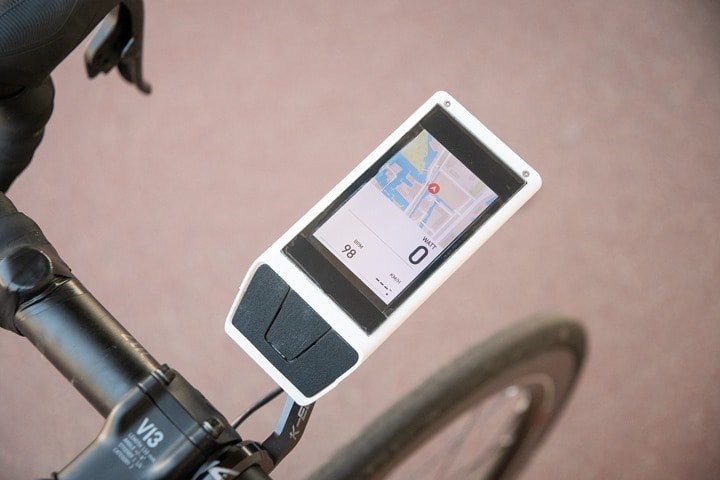
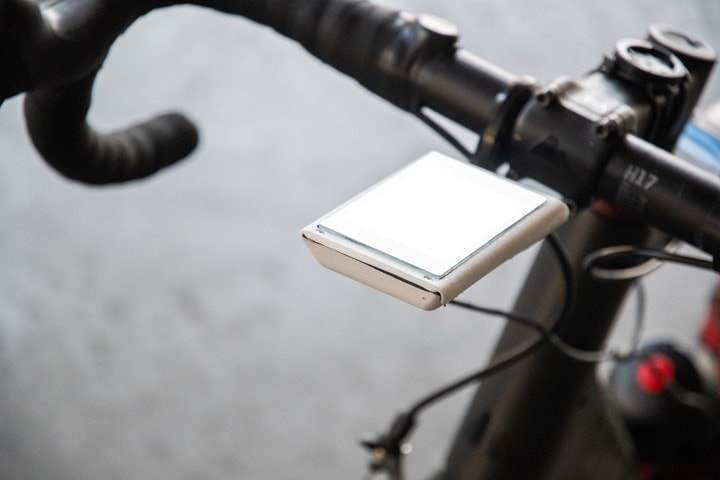

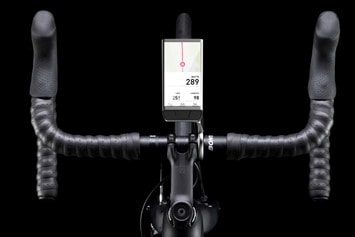
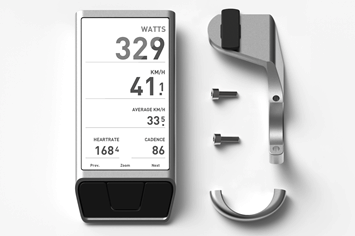
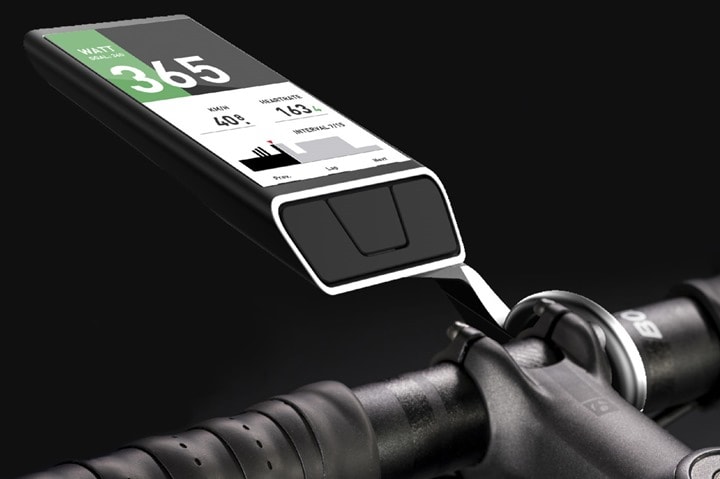
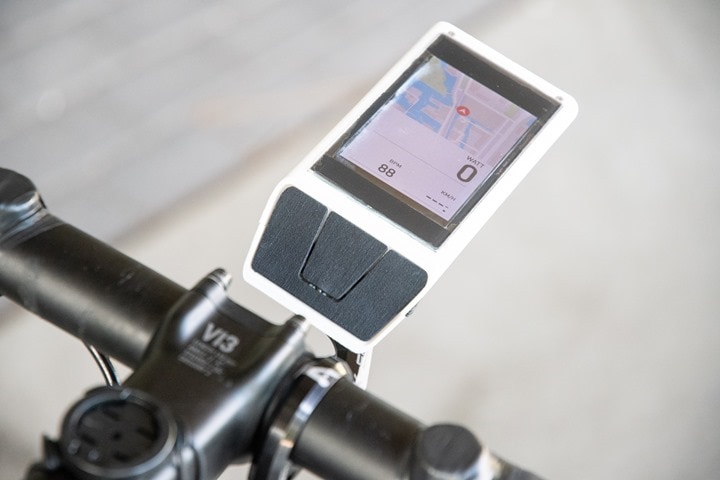

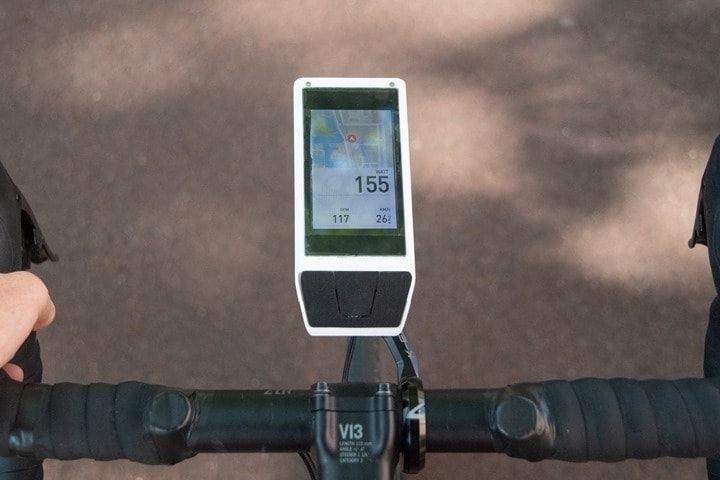


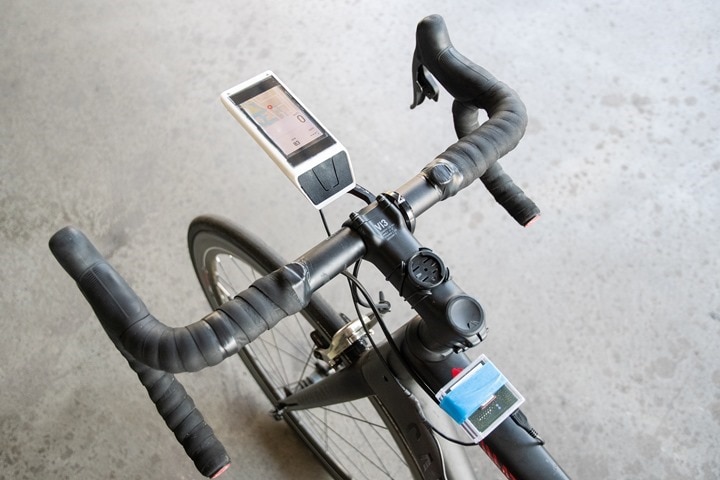
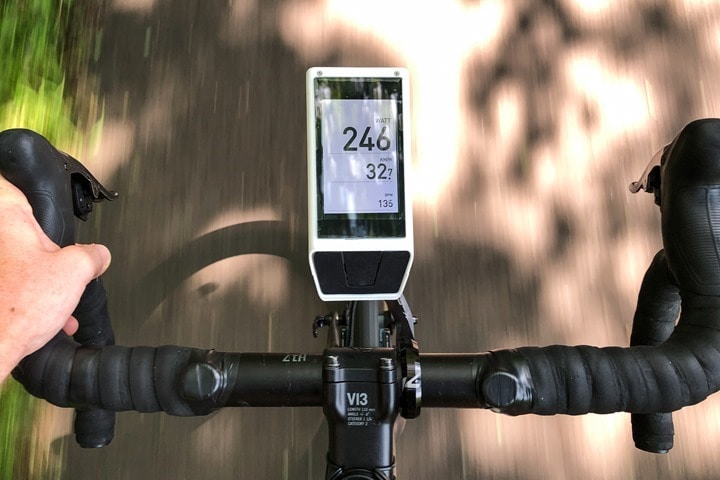
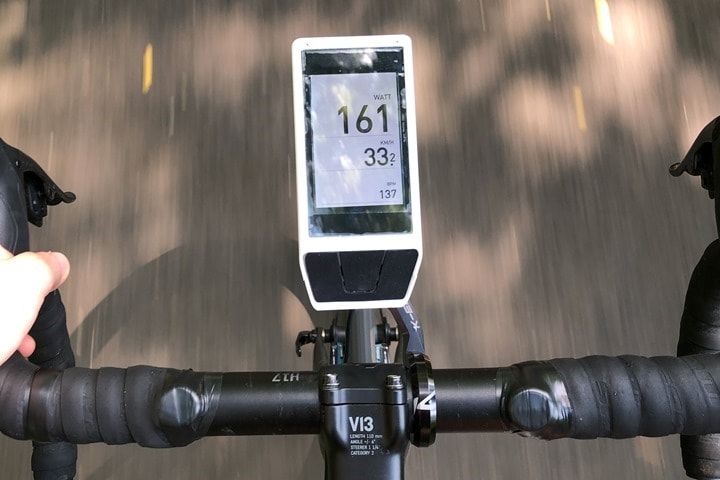
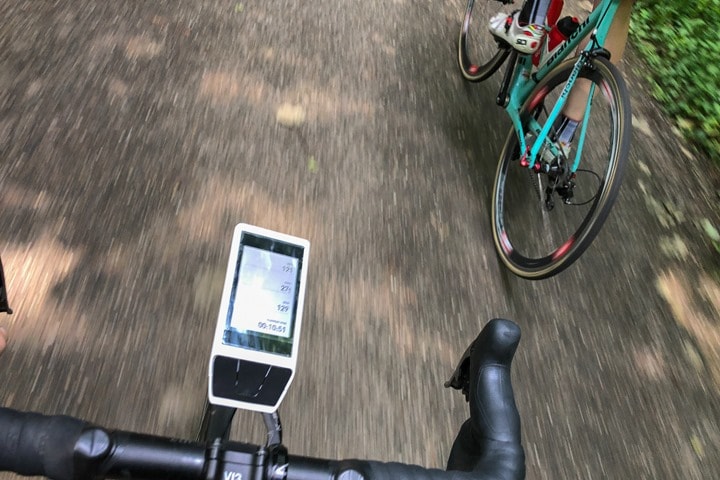
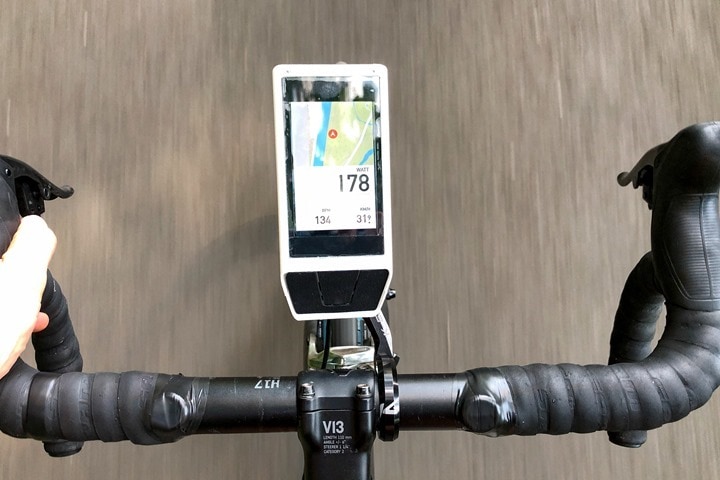
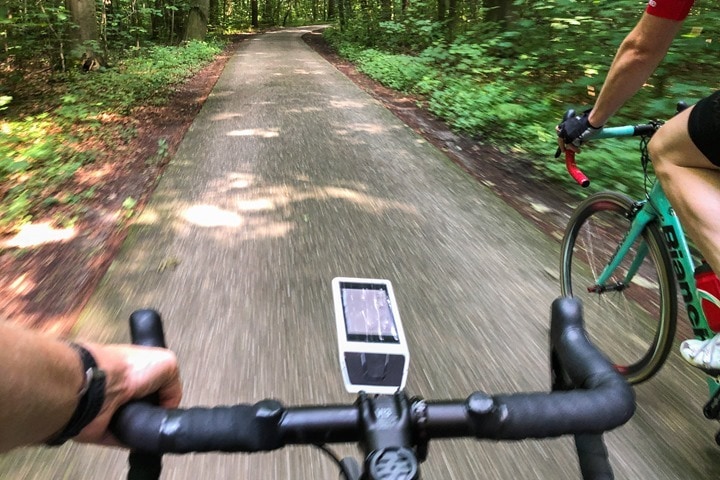
















It seems like a head unit that is a fully functional GPS turn-by-turn router with re-routing on the fly PLUS having all the expected telemetry while the software to interface with dozens of ANT+ and Bluetooth transmitters is really really hard to pull off.
Given the time it took Hammerhead from launch to just now working out the kinks on the Karoo and the issues in your most recent thread on Garmin, this and other units are a hard pass until you write a review that says “It just works”.
That said – best of luck to you Absolute.
I’d love to see a new full review of the Karoo, just to learn if it’s a decent, viable product now.
Looks interesting, but not interesting enough for me to become a backer. However, the more companies out there building cycling computers, the better it is for us cyclists.
I have seen ads coming up for this the last few weeks and was wondering when this post would come.
Looks like an interesting unit but as pointed out, the big selling point was increased accuracy. I’m quite happy with the accuracy of my Edge unit, and that would not be the reason why I am switching.
And at that price for a unit that will be available in 9+ months time, it’s not for me..
However, best of luck to them. Hope they make a great unit at a much lower pricepoint.
I have a lot of friends cyclist in India and working in IT,
Yup, there are many DCR readers as well in India.
But that’s not what the issue often is. As noted, it’s having developers in a different country than the management/vision/leads, and then applying a language barrier atop that. Not having sport-specific experience is just icing on the cake.
I think you’re right that “more accurate GPS” isn’t a selling point. For me, and I think I’m pretty typical, better interface, better battery life, and lower price are more compelling. And while I’m at it, how about an NFC mount so it auto-detects which bike I put it on?
@Fred get down to that patent registration shop sharpish. nice idea about the mount.
@anyoneelse
+/-2m GNSS accuracy for a bike: what would be the target demographic for that? Maybe navigation? though I suspect that one of the issues for nav is simply the processing power of some bikenavs and their delay in translating the position into a directional instruction at speed.
20 samples in a second – probably fine if each reading is a good one. Not sure what use 20 bad readings would be.
@Ray: If I recall correctly(?), Garmin’s OWS mode involves boosting the sampling rate. Have you ever tried OWS mode for running in an attempt to improve the gnss track?
+/-2m GNSS accuracy for a bike = more accurate speed, distance and altitude metrics?
Quoted errors for GNSS accuracy are always the horizontal error. Vertical errors are larger due to the way the systems work. Elevation errors are less critical as mostly you just require your horizontal position on the Earth’s surface.
speed sensor+baro/DEM = even more accurate
I would guess you can’t tell the speed difference for +/-2m accuracy vs +/-5m accuracy
I live in a mountainous region, so “more-accurate GPS” would be a big selling point… anything that could keep 10m accuracy on climbs and descents would be a HUGE improvement to overall metrics and Strava-segment matching. I regularly ride with five different recording devices (yes, I’m that much of a data geek), and while they’re all more or less the same in open areas, it’s still super depressing how wildly off they are, from reality and from themselves, in the mountains.
I’ve seen units that advertise, like this one, support for “GPS, GLONASS, Galileo, Beidou”, but I’ve never seen one that supports all four at the same time. Doing so could indeed make things more accurate, one imagines. Does this unit use satellites from all four?
Being in Japan, I’d like to see QZSS support as well.
But that’s a problem that’s easily solved by using the thing these guys are trying to get rid of: a speed sensor. Unless your interest is in the actual track a speed sensor gives you accurate speed/distance no matter what GPS etc. are doing, and as a bonus, it’s “3D”.
Better gps… couldn’t care less, no rerouting big problem, there is zero point in having navigation if it doesn’t reroute you, not one person would buy a car nav system that didn’t reroute, but somehow these guys think it’s ok, madness, also WiFi what’s the point, it’s bluetooth linked to your phone, why have WiFi which just drains battery, WiFi is switched off on my Garmin, just sync via phone… got to say there is nothing compelling to invest here
I’m a big fan of WiFi in sports devices. Syncing a Garmin over a WiFi is a 1s affair, compared to nearer a minute over Bluetooth.
Good read. Ouch, that price. It’s also just physically big but sizable text might be a positive. 20 hours of battery life is welcome. It sounds like they might have pushed a little too quickly. I wear glasses and glare would make reading a difficult task. I certainly wish any start up the best as ingenuity is a rare thing in a world of copycats.
Is this bike computer (mobile phone) running an android OS?
If Apple wanted to make an iOS cycling app to compete with all the others, could they do it? Is there anything about these head units that has an advantage over an iPhone or Android phone? Besides physical buttons and better battery life.
I’ve never had a bike computer so I don’t understand why these companies aren’t just making apps alone.
Lots of people do use a phone. The big differences are the built in mounting system, the always on screen that can be seen in direct sunlight, and the battery life. I’ve only ever had iPhones, and the screens have gotten better over the years, but they’re still not as easily visible in direct sunlight as Garmin screens are. Apps can force the screen to be always on on a phone, but that vastly cuts down on battery life, where no cycling GPS I’ve ever had ever claimed less than 10 hours (and usually met it). And the built in quarter turn mount is one of the best things Garmin (or whoever it was that they stole it from) ever invented.
I’d add to Paul’s response that size is also a factor. Even the “huge” Garmin Edge 1030 is smaller than most phones that are available today. I, for one, would love the 1030’s functionality in the form factor of my old 1980’s Avocet bike computer.
Another factor is putting that expensive smartphone with all of your personal data in a high risk location like bicycle handlebars. The risks of such use include theft as well as dropping and crashing.
Yeah, good points. I should also add in the case of the iPhone in particular the inability to pair with the vast majority of sensors out there (ANT+), and the inability to pair with power meters or more esoteric things like lighting networks, radar, and trainers. All these can be done with Garmin Edges.
Thank you all. Very interesting and informative.
An interesting entrant into the market. A few thoughts:
-Location accuracy, not sure I see the point, sure you want your track to be accurate, but 2m and 20Hz. It only makes sense if this is filtering out errors, and provides turn by turn route correction. No one likes it when GPS doesn’t connect or gets lost during a ride, but I might have thought this be supported at 1Hz in combination with accelerometers (within acceptable limits for riding that is). And the hot start, again surely this is a coding element applicable to all GPS units (Code line xxx “am I where I was when I received my last position? Y/N”)
-3 buttons, yup nice and simple, but could be a pain if you don’t carry your phone with you to adjust something. (ie in a race)
-Size (yes, I know you show a prototype, but the Edge 530 seems a sweet spot, and the Edge 1030 is more of a choice by few. I have one and frequently get comments that it is too large.
-Battery life, sure not many ride for 20+ hrs, but it’s the charging over a week of rides – I’d like to know that I have heaps of charge and not suffer from anxiety of battery fail. And as you mention if you find yourself mid ride with low power, then game over. At least the 1030 (and 530/830) accept the extended battery or have a micro USB.
-Mount – just use the 1/4 turn that everyone else uses, it’ll reduce the hurdle to new customers, don’t reinvent the wheel.
-the campaign bangs on about saving 30g for a wheel speed sensor, not sure that is a game changer.
-Price, as Ray you have mentioned in the past 1) assume your crowd funding money may never result in a product (eg IQ2) and 2) price should be tempered against risk and features of the bench marks. US$500 that’s just way too high for an unproven product.
-Design – absolutely make it look amazing, make it aero, make it sleek, make it elegant. Love it.
Absolute may become the next big thing.
Wish them the best.
[Forgive the appearance of negative thoughts, these are intended as constructive. And just sharing why I will choose to defer backing for this project.]
People tell *you* that *your* choice of device is ‘too large’? [Shakes head]
Ray, on the other end of the Crowd Funding spectrum, have you seen the super inexpensive GPS bike computer running on Kickstarter, the Xoss G+? I obviously don’t know if it will be any good, but at the price I couldn’t resist backing it to find out.
I’d have taken a look at the comments on their Sprint unit first before putting money down on the G+.
Hey there Shane!
I’m a long time fan of your channel, so nice to bump into you here!
I can assure you, my expectations aren’t huge, but for $35 US, it was cheap enough that it fit into even my rather low “what the heck” range for taking a flyer on. As for value vs cost it seems a safer bet than the Absolute does, $500 US for a bike computer is just ludicrous.
I am actually in the market for my first cycling computer, but I’ll probably buy it before the G+ even ships. I’m currently leaning towards the Lezyne Mega XL, or at least something in its price range. I don’t need a lot out of a unit, I just want to put something in front of me, and quit using Strava running on my phone for ride tracking. (which lives in the jersey pocket, as I don’t want it on my handlebars)
I have the Xoss Sprint via Kickstarter. Device had opportunities but the lack of support is killing. Therefore not investing in their new Kickstarter project
Interesting but I’m not sure the increased accuracy is a seller for road use. Firstly the garmin devices I use all seem more than accurate enough, secondly I always assumed that the devices ‘assumed’ you were on the road anyway, so if the gps was showing 5 metres off the left the device shows you on the road irrespective.
No touchscreen and only three buttons (even a Bolt has six!) can only mean that it will be totally useless for real world navigation tasks.
Yes, it might be the reasonable thing to do to come to a stop and fire up the old phone when the planned course does not work out (just like not descending that alpine road wearing hardly more than a swimsuit might be the reasonable thing to do), but the reality is that we don’t. Also, a quick check of the map ahead on the Edge is arguably less unsafe than bringing a double paceline to a sudden stop because you are only 90% sure about the upcoming intersection. Maybe the developers are actual cyclists, but they don’t seem to be immune to the problem of being way too deeply in love with their own creation to notice the obvious shortcomings.
Funny tidbit: one point in the FAQ raves about sensor fusion, the next one boasts about removing the speed sensor. I get it, they are fusing satellite position with the inertial sensor that is included in pretty much everything now (which seems to be where the 20/second is coming from, but this would actually be rather slow for an IMU), but wouldn’t the best sensor fusion want to fuse as many inputs as possible, particularly not forego an easily available actual odometry sensor?
The bike computer is getting bigger. These buttons are drums? Who designed it ??? It’s time to adapt your smartphone to your bike.
Signa Rox 12
Wireless-only is a huge flaw, limiting this to less-than-a-day events only 🙁
And the price also looks weirdly high.
The Samsung Galaxy S10 family of phones can wirelessly charge other devices, and there are powerbanks with a wireless charger. You could use either of those to charge this bike computer (very slowly) when you’re resting. Finally a use for those devices!
If it’s not already clear that I was being sarcastic, I think making electronic consumer devices wireless only a dumb idea, especially for devices that get updates (that might fail and brick the device).
love the edge to edge screen super excited.. beautiful.
I’m still using my garmin 910 because the rest of the bike computer industry loves screen bezels and it needs to stop. I think a few have more bezel area than screen area. I hope they are successful and drive garmin and the rest to change their screens.
C
Ray is exactly correct with his outsourcing comments (India or other). Everyone with any experience in the field doing development of any complexity knows what he is saying. If you don’t have a top notch lead dev. designing and managing the development as part of the core team directly under your control, you are seriously at risk. Given this is both a software/hardware greenfield project, the risk is already through the roof. You need a lot of money and some serious talent to pull this kind of thing off.
Well, yeah. If your lead dev isn’t top notch you’re seriously at risk, full stop. Entrepreneurs succeed because they pick the right people.
Really a dumb move if they stick with wireless for the final product.
That just adds to the cost and who wants a GPS that requires a charger base?
USB-C will separate them from the pack and allow charging the unit anywhere, plus support an external battery pack.
They could add 2-3 more buttons in the same space if needed. However, the elongated design takes forward mount to a new level and I’m not sure that’s a good thing.
The prototype looks like a mobile phone running android. The 3 buttons are the same as android OS and wireless charging because the usb port has Ant+ dongle.
My android has ant+ built in with no dongle. Most do….
Some Android phones have ANT+ built in. It is not most. Some Samsung phones do. Sony have dropped it.
Maybe I missed it in the review, but after the Hammerhead ordeal I have to ask: Is there sound to warn for turn by turn navigation coming from the device itself?
Was looking forward to try this out, but no usb charge option rules out the computer for me, period.
Yup, covered under ‘audio alerts’ in the hardware section.
But yeah, it was basically the first question I asked. They said definitely. They haven’t decided on the final tone pattern yet, but that’s purely a software thing of course. Hardware-wise it’s always been there.
It’s been funny to me, at this point that’s the single biggest item from keeping me from recommending a Hammerhead Karoo (whereas otherwise I think it might find a place in certain cases). I’ve been kinda astonished they haven’t gone to a Karoo V1.1 hardware build that adds in it. Perhaps they just have tons of inventory, or perhaps they don’t understand how critical it is. Not sure.
Thanks at least they avoid mistakes made by Hammerhead. Dont get me wrong, I like Hammerhead despite its flaws, for me the biggest reason it stays at home is the clunky way maps get handled. Takes years (so to speak) to download and the regions are severely limited, despite the promise it would be by country in the future.
For that matter I hope this computer will have that option, seeing they pull the maps from the same source.
there was recently a firmware update which might address your concern (I’m 95% sure it does)
Love the edge to edge concept design
If this device can get routes from Strava with turn-by-turn directions, I would be very surprised. Wahoo can’t do it, but this tiny startup can ?
I assume what’s keeping Wahoo from doing it is that Strava demands a huge amount of money to export the routes with turn-by-turn directions, and Wahoo can’t afford it.
But Absolute can afford it ? Maybe that’s why it’s so expensive — $200 of the $500 price goes to Strava ?
Wow, such a high screen resolution. Oooooops, only three buttons with a non-touch screen……….
I’ve used XOSS from a Chinese brand, three buttons and a non-touch screen. Although it indeed has a menu on the unit, the app is used to setup every thing. Besides the firmware and the app need improving, what I want on the unit is more buttons! Three button is not easy to use to operate.
I love this edge to edge high-resolution screen. At last there is a brand which is willing to spend more on the high quality screen. However, these three, only three and huge buttons look very, very stupid.
I would not go ti a go.
Finally another promising competitor. But what I cannot understand at all is that it lacks a basic phone functionality like having three emergency numbers to call as well as the ability to call ( enter each country’s equivalent here ) 911 and therefore having a built-in hardware e-SIM. I just want to leave the damn phone at home. I want to spend those rare hours training outside with myself and tranquility or with my mates competing for roadsigns. I just don’t want to have nowadays laptop-sized glass screens at my back and be constantly bothered by boss, wife or whatever. But I want to have some emergency back-up call function. I begged Hammerhead for it before they got better at lies and accusations than at developing a proper cycling computer but they did not listen.
A built-in 4/5G unit would also solve connection issues between phone and device ( hear me Garmin ? ) as well as the ability to access platforms such as XERT in real-time. It woulsd enable a proper and STABLE ( HEAR ME, GARMIN ?! ) live tracking function. This would be a real step forward and a massive USP.
Add a small pod with an acceleration sensor to attach to your helmet as an option and you won’t hear of any cyclist found dead in a ditch besides the road 8 h after a hit-and-run accident again. From a business point of view this will boost sales as the loved-ones at home know about the dangers of the road and want you to be safe. My wife would be one of the first backers.
You have to have those USPs to get people away from Garmin
Late to the party, but do you guys have any news regarding this project? Is it officially dead, or moving forward?
I liked their idea a lot, and judging from the tests they did with pros, teams, etc. I assumed they were serious about it. Unfortunately, a delay of 3 years raises some flags 🙁
If you look at their Indegogo page Ray links above, they’re still issuing updates, but they seem to be trivial updates. They didn’t raise enough money for it to be a lucrative scam, so my guess is that they’ve run out of money and haven’t admitted to themselves or their backers that they’ve failed.
Still, the best helmet mirror I’ve ever used (and still use) came 2 years late from a Kickstarter campaign, and I was in the lucky half that actually got a mirror. There are a couple of things I’ve backed on Kickstarter that are more than a year overdue now. So it’s not impossible that they finally come through. But with Garmin likely to refresh the Edge line this year (with dual frequency GPS?) and a variety of other successful competitors to Garmin out and available, why would I even consider this?